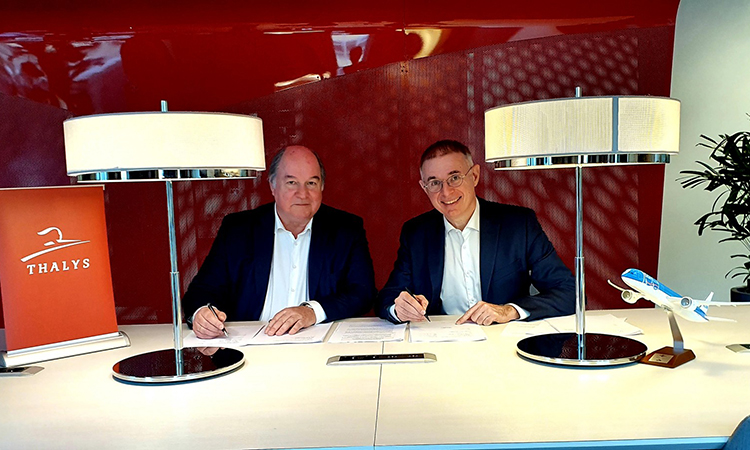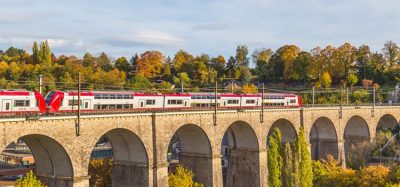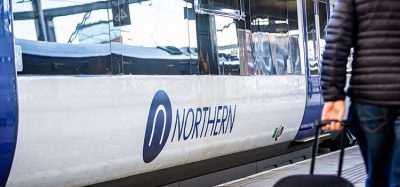KLM and Thalys agree to continue developing AirRail product
Posted: 11 April 2022 | Elliot Robinson (Editorial Assistant - Global Railway Review) | No comments yet
KLM and Thalys have agreed to continue developing their AirRail product which aims to increase KLM passengers travelling by train.


Credit KLM - (Left to right) - Boet Kreiken (Executive Vice President of Customer Experience for KLM) and Bertrand Gosselin (CEO of Thalys)
KLM Royal Dutch Airlines and Thalys have closed an agreement to continue developing their joint AirRail product with a view to making it more appealing to customers. The aim is to increase the number of passengers with connecting KLM flights at Amsterdam Airport Schiphol who travel from Brussels by train.
For some time now, KLM has offered transfer passengers the option of boarding a Thalys high-speed train instead of a flight on the Brussels-Schiphol leg of their journey (or vice versa). Before the Covid-19 pandemic, 20 to 25 per cent of these passengers (some 36,000 customers) chose this option. KLM and Thalys would like to increase this percentage, and KLM is consequently purchasing enough seats from Thalys, which makes one of its daily services between Brussels and Schiphol redundant.
It is not enough to simply make these train seats available, however. KLM and Thalys have decided to take the next step in developing their AirRail product, in keeping with the Dutch government’s Action Agenda for Rail and Aviation (Actieagenda Trein en Luchtvaart).
Several criteria vital to the success of any replacement rail service have been defined and are endorsed by both the railway and airline sectors:
- International trains must stop at Schiphol
- Air and rail arrivals and departures must be coordinated
- Airline and railway IT systems must be able to communicate with each other (e.g., for check-in, boarding, rebooking passengers in the event of disruption and so on)
- Railway baggage handling must also be integrated, with trains having secure baggage compartments and with efficient baggage transfer procedures at Schiphol to ensure speed and convenience
- Passengers arriving at Schiphol by rail must have a separate transit route to the gate.
Thalys already meets the first two criteria on the Schiphol-Brussels route. With respect to criteria three, communication between IT systems, KLM and Thalys have found a workaround: the seats KLM purchases on Thalys trains are entered manually into KLM’s IT system, ensuring that customers who travel by rail enjoy the same level of service and the same efficient communication as those who opt for air travel. This means that customers can check in and receive boarding passes at Brussels-Midi/Zuid railway station for their entire journey, both rail and air. KLM updates and rebooks customers in the event of disruptions in both rail and air services. KLM also offers customers information on transfers and on how to prepare for their journey. KLM and Thalys will ask their international customers to help them evaluate this temporary workaround.
“KLM is committed to reducing the impact of its operations on our living environment, we aim to reduce emissions by offering the train as an alternative to short-haul flights,” Boet Kreiken, Executive Vice President of Customer Experience for KLM, said. “Developing the AirRail product in partnership with Thalys is a step in the right direction, and linking our two networks at Schiphol for quick, efficient and convenient transfers is a positive move.”
“Intermodality between air and rail plays an important role in achieving our growth ambitions,” Bertrand Gosselin, CEO of Thalys, said. “The extension of the cooperation with KLM fits perfectly with this ambition. Together we are creating a product that combines rail and intercontinental flights to meet our customers’ expectations of an environmentally friendly alternative.”
Related topics
Airport Rail Links, High-Speed Rail, Passenger Experience/Satisfaction, Sustainability/Decarbonisation







